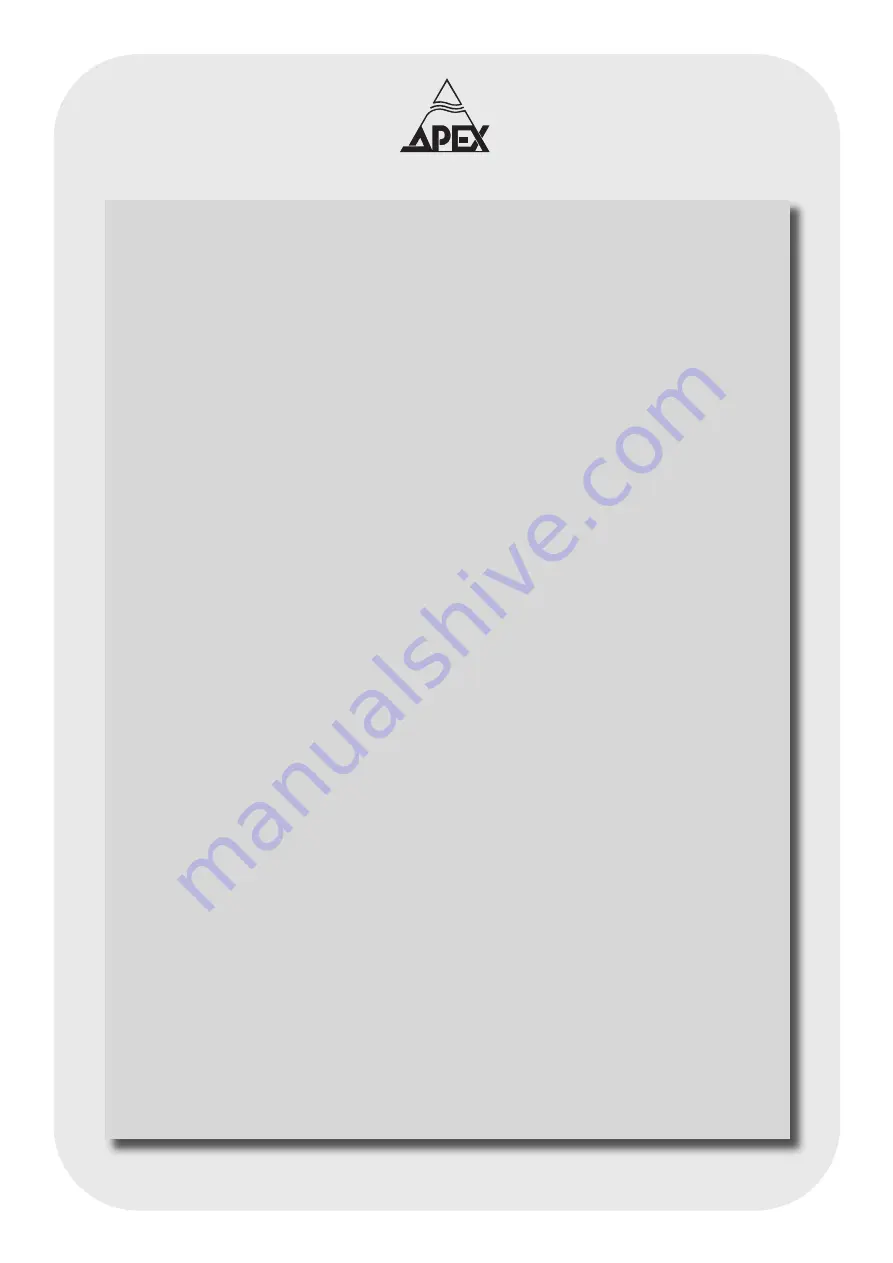
ATTENTION
1) Read instructions - all the safety instructions must be
read before the usage of the device.
2) Following the instructions - the instructions must be
a reference for all that follows.
3) Taking the signs into account - all the signs on the
device and in the manual must be taken into account.
4) Following the instructions - all the following instructi
-
ons must be followed without exception.
5) Cleaning - Disconnect the power cord before all clea
-
ning. Do not use alcohol or benzene to clean the device
nor any other liquid. Clean the device with a lightly
damp cloth.
6) Accessories - do not use accessories that are not
certified by the manufacturer or that can cause injuries.
7) Water and humidity - The device may not be used
near water, for instance near a bath, river, damp room,
swimming pool, or any similar environment.
8) Stands - do not use an unstable stand. It can fall and
injure someone and the equipment may be damaged.
Do not use anything other than stands and mounting
systems that are certified by the manufacturer or that
are sold with the device. Make sure that the mounting of
the device is done properly. Observe all safety instructi
-
ons provided by the the manufacturer.
9) A device mounted in a mobile rack must be treated
with care. A sudden stop or pushing it too roughly, in
combination with a rugged surface can make the rack
tip and so injure someone or damage the equipment
that is in the rack.
10) Ventilation - The perforations in the casing of the
device are there to make sure that the device can ope-
rate at the correct temperature and cooling of the inte-
rior be guaranteed. You must make sure that these
openings are not blocked in any way such as by panels
or tissues or papers. The device should not be mounted
in a closed case where no passive or active ventilation
is possible.
11) Power - you must connect the device to a power line
described in the manual or at the back of the device. If
you are not sure that the unit as supplied is correct for
your supply voltage, please contact a technician or your
local reseller.
12) Grounding and polarisation - this device can be
equipped with a polarised power connector that only
connects one way round which can provide additional
safety features. If you are unable to put the power plug
into the socket, try it again the other way. If you do not
succeed to put the power plug into the socket, ask a
technician. Never try to modify the plug so that it will fit
the socket.
13) Protection of the power cable - Make sure that the
power cable is not damaged in any way, for instance
by other machines that are mounted above or below
the device.
14) Usage - for extra safety and environmental rea
-
sons we recommend disconnecting the mains if the
device is not being used for a longer period.
15) Power overload - do not overload your power lines.
Make sure that you do not exceed that maximum load
your power cabling can handle. Doing so may pose a
fire hazard.
16) External objects and liquids - make sure that no
external object and/or liquid can enter the device.
There is a risk of electrical shock and the machine may
be damaged and need servicing. Make sure that you
never poor liquids onto the device.
17) Maintenance - There is no need to open the
machine for servicing. There are no serviceable parts
in the machine.
18) Repairs - unplug the device and refer to a qualified
technician in the following cases:
a) The power cord is hot or damaged in any way.
b) An object or liquid has entered the device.
c) The device was exposed to rain or moisture.
d) The device does not seem to work properly accor
-
ding to the manual. Do not use more and other com-
mands than you will find in the manual. Contact a
certified technician to help you restore the standard
commands.
e) The device has fallen or the chassis is deformed.
f) The device performs abnormally, showing signs of
malfunction.
19) Spare parts - if it is necessary to replace certain
parts, make sure that only certified parts are used or
that the used parts have the same characteristics as
the originals. Using incorrect parts can change the
device’s performance or even destroy it completely.
20) Verification - after repairs, make sure to test the
device thoroughly. Not only the functionality, but also
the safety of the device must be tested.
21) Mounting on the ceiling or wall - the device can not
be mounted on a wall or ceiling, because this will cover
the ventilation perforations causing the device to over-
heat.
22) Heat - the device must be kept away from all heat
sources, such as radiators, stoves or other devices
mounted in the same rack including amplifiers.




































